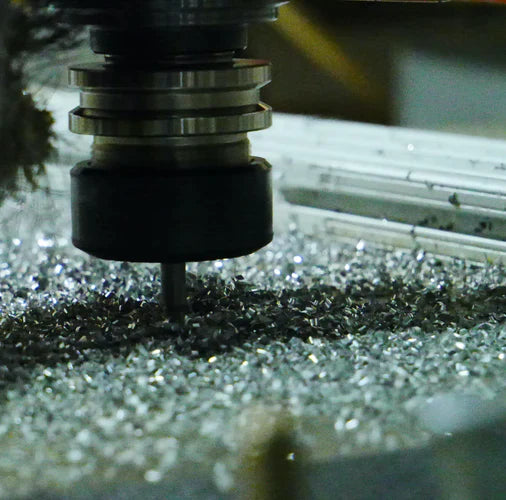Your Cart is Empty
DESIGNED IN SEATTLE | MADE IN SEATTLE
DESIGNED IN SEATTLE | MADE IN SEATTLE

WHICH CNC TOOLPATH IS RIGHT FOR YOU?
March 16, 2021 2 min read
CNC Fabrication can transform the way you design and produce parts, but it requires many different resources to master its use. When starting out, it can be daunting to understand terminology and how or when something might be used. We thought it would be helpful to highlight the four toolpaths most frequently used at Common Fibers for foam plug fabrication and explain a little about when to use them:
Roughing Pocket | Parallel | Contour | Pencil

Roughing vs. Finishing
Before looking at these four toolpaths, it is important to distinguish the difference between roughing and finishing passes, as these toolpaths can be used for both. Roughing toolpaths cut the surface in several Z steps and are used with large diameter tools with coarse settings which removes material efficiently. Roughing passes are used to block out your design, giving you an increasingly resolved shape with each pass your tool makes. When you need your design to have a good surface finish with close tolerances and high dimensional accuracy, you will need to make finishing passes, which cut more slowly and at a more shallow depth than roughing passes, but provide a cleaned-up and accurate shape.
Pocket and Parallel
The first two types of toolpaths are very helpful when roughing a new design. The pocket toolpath is one which follows a closed curve. With finer settings, you can cut the footprint where parts might join or, with coarser settings, remove excess material very efficiently.
Alternatively, the parallel toolpath with coarse settings is often the first toolpath used when removing the bulk of material from all surfaces. A parallel tool path is great for surfaces that are not too steep. As surfaces get too steep, parallel passes will not produce great finish results. When this occurs, it is best to follow with a contour pass.
Surface Contour
This toolpath creates shapes like a topographic map, cutting along paths at incremental heights. This results in vertical faces with terraces. As the slope of a shape increases, these terraces, or step-downs, get closer together. As the slope becomes shallower, the steps are spaced further apart. This path shouldn’t be used for removing material from a horizontal surface but is best used to remove material from vertical or near-vertical surfaces.

Pencil
The final toolpath on the list is used mostly for finishing passes. The pencil toolpath is a clean-up path used to remove excess material left in a path from larger cutters. These toolpaths are the best at cleaning up radii, where two toolpaths intersect to create a common line, or where the cutter might be in contact with two surfaces at once.
For more information on machining foam plugs, how to design parts, or to learn more about the processes and solutions we use in the shop at Common Fibers, check out our otherDIY Blogs.
Subscribe
Sign up to get the latest on sales, new releases and more …
